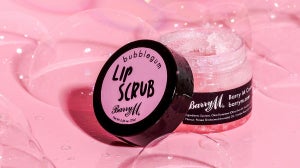
With summer in full bloom, the insect season is also in full swing. Although mainly harmless, insect bites can cause pain and discomfort which may last for up to a week. I'm explaining how to recognise the most common bites and how best to treat them.
Recognising Common Insect Bites
In order to treat a bite effectively, it is important to distinguish the type of bite and the reaction caused by it.
Wasps and Hornets
This sting feels like a sudden sharp needle-like pain that may develop into a swollen red mark lasting for a few hours. It can remain painful and itchy, with some individuals suffering from a more serious inflammatory reaction, which can also affect the surrounding skin and last for up to a week.
It is important to look out for allergic reactions, which can be fatal if not treated straight away. It is rare, but some people can have an anaphylactic reaction, which causes breathing difficulties, dizziness and swelling of the face or mouth.
If anyone shows those signs after a sting, call 999 or seek emergency medical services for an ambulance.
Bee Stings
Bee stings are very similar to wasp stings, however you will often find the sting still in the wound. This means that before the bite is treated, you need to remove the sting.
Most people will suffer from some swelling, pain and redness for a few hours with bee stings. However, as with Wasp stings, it is possible to experience a severe allergic reaction, in which case medical assistance should be called immediately.
Mosquito Bites
Although mosquito bites are not that common in the UK, it is important to be able to distinguish them from other bites, especially when abroad, due to a risk of Malaria.
The bites display themselves as small red lumps which are extremely itchy. Some people are more sensitive to these bites and can develop fluid-filled larger blisters as a result.
If you develop symptoms such as a fever, cold sweats, pains and vomiting then seek medical help.
Bedbug Bites
Bedbug bites are quite common but unpleasant. Bedbugs can live in mattresses and your pillows for a long period of time and need all bedding and soft furnishings to be washed at a high temperature to kill them.
The bites are not usually painful but show as slightly raised and itchy red bumps. They tend to have irregular border and are often seen in clusters or lines.
You will usually spot the bites in areas that are uncovered when you sleep or on your back and stomach. .Mite Bites
Mite bites are often a result of your pets being infested with mites. They will bite any areas of uncovered skin and people can also get the bites on their abdomen and thighs if your pet has been sitting in your lap.
Mite bites develop into small lumps that tend to be very itchy. Some people can also develop blisters which look similar to chicken pox.
It is very important to get these treated as mites are able to burrow through your skin to lead to development of scabies.
Treating Bites and Stings
Although the bites and stings may be caused by various insects and they may display differently on your skin, most of the treatment options tend to be the same.
Most of the time, the sting or bite would require no treatment and will last only a few hours. However, there are a few general guidelines you can follow to help reduce the inflammation and prevent infection:
- Always try to remove the sting as soon as possible but correctly. This prevents any venom from spreading and making the wound worse. Never pinch the sting with your nails or tweezers as this will either break the sting or realise venom in to your skin.
- Wash the area of concern with water and a gentle soap to remove dirt and debris. Anti-bacterial soaps and wipes can also be used to remove any bacteria surrounding the wound.
- Apply a cold compress or an ice pack to any wounds which are prone to swelling and inflammation for at least 10 minutes. This helps to cool the wound and area down and can also reduce swelling.
- Try not to pick or scratch the wound too much. This can irritate the area and make the wound worse and infected.
- Calm pain with ordinary painkillers. If you can take painkillers, this can help with any painful symptoms whilst the inflammation goes down.
- Use antihistamines to soothe itching. These can be in the form of antihistamine tablets or Hydrocortisone creams.
Don’t forget that if you aren’t sure about a bite, it is always the best idea to speak to a medical professional. Your pharmacist is always a great option.

Related Articles








